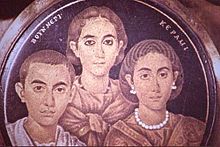
Step 1: Introduction Start by reading about ancient Roman society to get an overview of its history and significance. You can use the resources below or conduct your research. - The Ancient Roman Society:
An Introduction
Ancient Rome:https://www.bbc.co.uk/bitesize/guides/zq6wmsg/revision/1 -
The Social Structure https://www.ducksters.com/history/ancient_rome.php
History of Ancient Rome for Kids: Roman Food, Jobs, Daily Life (ducksters.com)
Step 2: Daily Life The daily life of ancient Romans was shaped by their social status, gender, age, and occupation. To understand the daily life of ancient Romans, complete the following tasks: - Research the typical daily routine of a Roman citizen, including their meals, clothing, and leisure activities. - Explore the role of women and children in ancient Roman society and how their lives differed from men's. - Investigate the occupations and professions in ancient Rome and how people earned a living. Summarize your findings. History of Ancient Rome for Kids: Roman Food, Jobs, Daily Life (ducksters.com)
Step 3: Society The Roman Empire had a complex social structure that included emperors, senators, soldiers, enslaved people, and citizens. To understand Roman society, complete the following tasks: - Research the roles and responsibilities of different classes of people in the Roman Empire, including their rights and privileges. - Explore the Roman family structure and the role of women in society, as well as the customs and traditions that governed their daily lives. - Investigate the Roman legal system, including the concept of Roman citizenship, the principles of Roman law, and the administration of justice. Summarise your findings.
Roman law | Influence, Importance, Principles, & Facts | Britannica
Step 4: FAMOUS ROMAN EMPERORS Directions: Use the link below to research the most important Roman Emperors. 11 Roman Emperors Who Helped Mold the Ancient World (history.com)For each of the emperors listed below, discuss their positive and negative impact on the Roman Empire. The chart should be completed in note form. FAMOUS ROMAN EMPERORS Emperor Positive/Negative Impact on Roman Empire Julius Caesar 1. 2. Augustus 1. 2. Nero 1. 2. Trajan 1. 2. Constantine 1. 2. Marcus Aurelius 1. 2.


